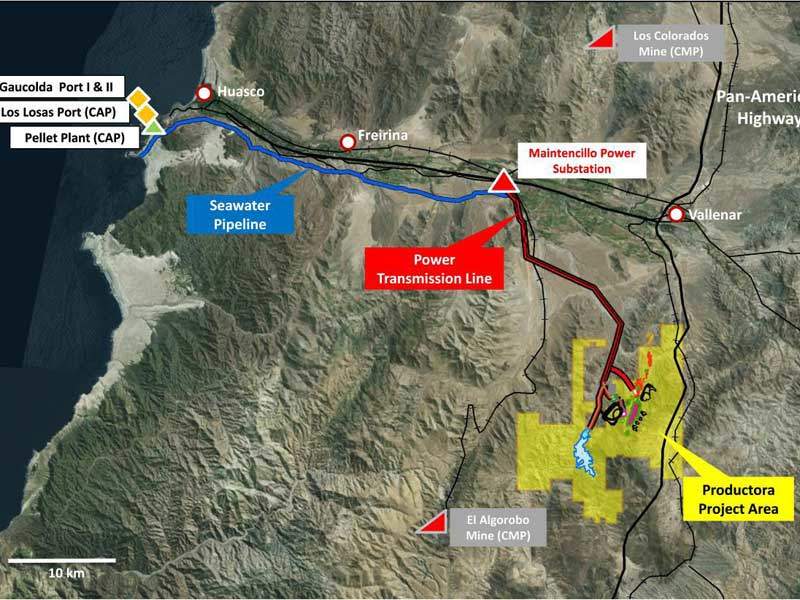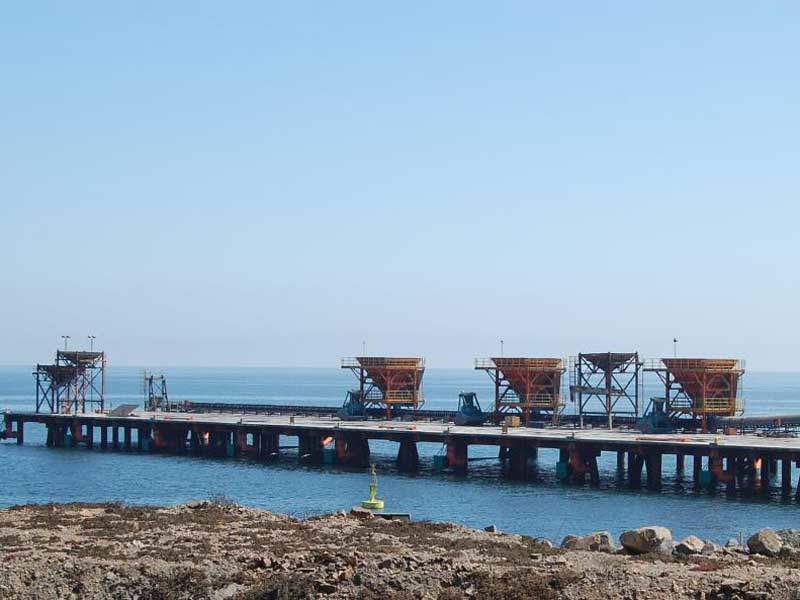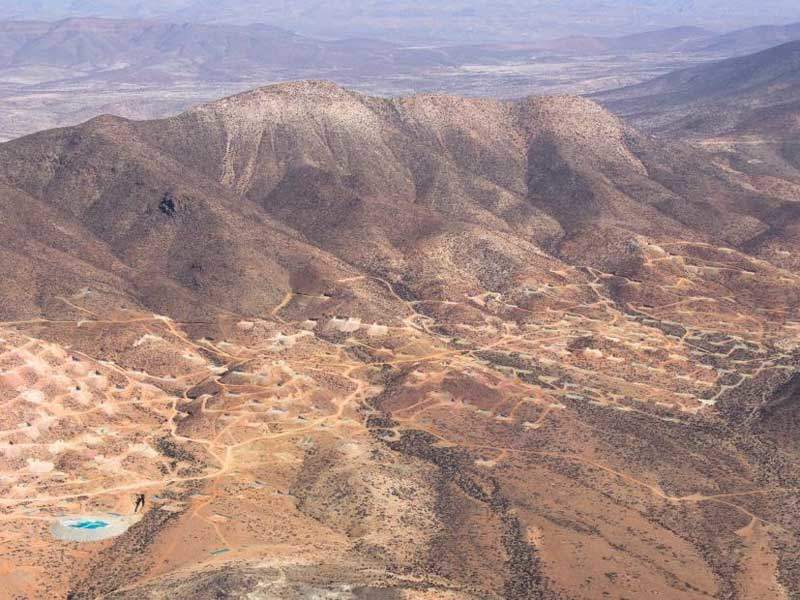The Productora Copper Project is located approximately 17km south of the regional township of Vallenar, within the coastal range of region III, and approximately 600km north of Santiago, Chile, the world’s biggest copper producer.
The project is wholly-owned by Sociedad Minera El Aguila SpA (SMEA), a joint venture that is 82.5% owned by Sociedad Minera El Corazón, a subsidiary of Hot Chili, and 17.5% owned by CMP Productora, a subsidiary of Compañía Minera del Pacífico (CMP). The latter has an option to increase its stake to 50.1% in the joint venture, following the completion of the project’s definitive feasibility study (DFS).
The pre-feasibility study (PFS) for the project was completed in March 2016, which estimated that the mine will require a construction period of two years and have an estimated mine life of 12 years.
The overall investment to bring the mine into production is estimated to be approximately $725m.
Productora Copper Project geology and mineralisation
The project will involve the development of the Main Productora pit, the Alice pit, and five minor oxide pits located to the north and south of the former.
The property hosts a thick volcano-sedimentary sequence of intermediate to felsic volcanic rocks and intercalated sedimentary rocks of the lower Cretaceous Bandurrias Group, intruded by Dioritic dykes.
Copper-gold-molybdenum mineralisation is hosted within tectonic breccia zones, whereas copper mineralisation at the Alice deposit is hosted within a single porphyry-style copper deposit, in close proximity to a lithocap.
Reserves and production at Hot Chili’s flagship copper project
As of March 2016, the property was estimated to hold probable reserves of 166.9 million tonnes (Mt) grading 0.43% Cu, 0.09g/t Au and 138 ppm Mo, and containing 0.72Mt of copper, 0.47 million ounces (Moz) of gold and 23,000t of molybdenum.
The combined indicated and inferred resources were estimated to be 236.6Mt grading 0.48% Cu, 0.10g/t Au and 135ppm Mo, and containing 1.13Mt of copper, 0.73Moz of gold and 32kt of molybdenum.
Annual production from the project is estimated to average approximately 66,000t of copper and 25,000oz of gold during the first eight years.
Mining and processing at the Chilean copper mine
The mining method envisaged for the project is open-pit, incorporating drill and blast, and load and haul operations.
The project will involve the construction of a sulphide treatment plant integrating a conventional bulk flotation copper sulphide concentrator to produce copper-gold and molybdenum concentrates.
An oxide treatment plant will also be constructed to produce approximately 10,000t per year of copper cathode by processing approximately 3.3 million tonnes per annum (Mtpa) of oxide ore. The facility will be equipped with a conventional crushing circuit / agglomeration circuit / heap leach circuit, as well as a solvent exchange – electro winning (SX-EW) circuit.
Infrastructure
The project will not require the construction of accommodation facilities at on-site, as the workforce will be stationed at the neighbouring townships of Vallenar and La Serena.
The electricity required will be sourced from the 220kV Mintencillo substation and supplied to the new substation at the project site via a 25km-long transmission line.
The required water will be sourced from the sea coast via an approximately 62km-long underground steel pipeline. An intake pump station at the coast, and a seawater transfer pump station and water storage pond at the project site will be constructed.
The project will further involve the upgrade of the Las Losas Port in Huasco Bay, located approximately 40km from the project site, construction of a tailings storage facility and waste dumps, and access roads from the Pan American Highway and the Mintencillo substation.
An existing aerodrome, located approximately 3km south of Vallenar, will also be an added advantage.
Key players involved
The consultants involved with the PFS of the Chilean copper project include Mintrex for the processing plant and associated infrastructure studies, NCL Ingeniería y Construcción (NCL) for the mine planning and optimisation studies, and MineSmith for the strategic mine scheduling and ore reserve statement. Artois was involved in the hydrogeological and water management studies, while Ingeniería de Rocas (Ingeroc) was involved in the geotechnical engineering studies.
ALS Metallurgy conducted the metallurgical testwork, DMCC performed the comminution circuit option study, HydroGeoSense performed the oxide heap leach pad stacking testwork, and Knight Piésold provided the design of the tailings Storage Facility (TSF) and heap leach dump.
AMEC Foster Wheeler (AMEC FW) performed the financial modelling, and AMC Consultants (AMC) conducted the peer review and audit of mineral resource.






